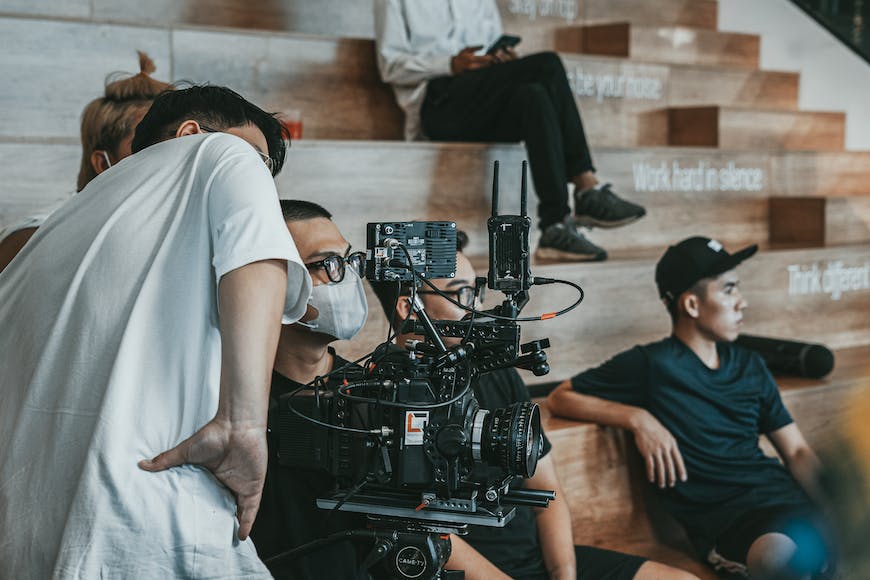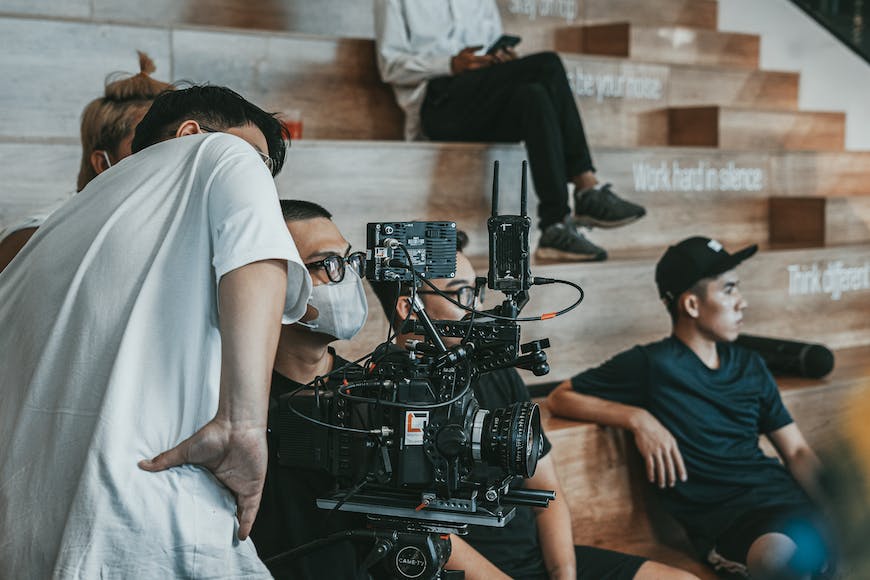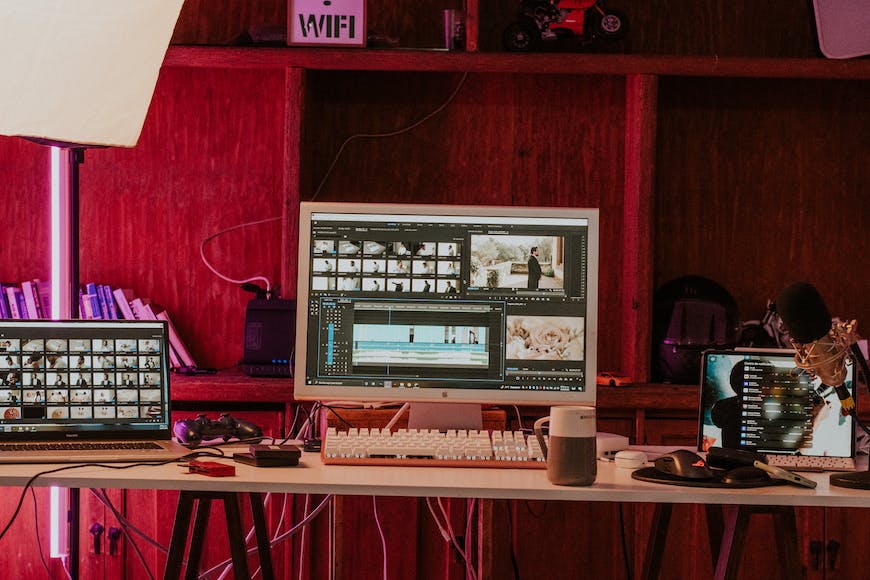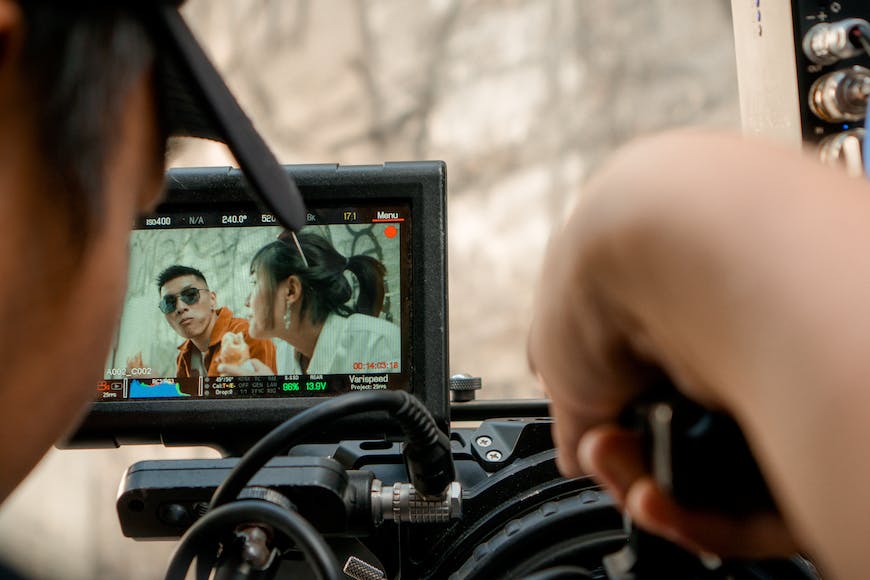
Have you ever asked yourself while watching a film’s end credit scene, “What does a director of photography do?”
Well, if you’re a film enthusiast, you’ve probably also wondered how one film looks better than others.
It could be the visual effects, the scene’s atmosphere, camera angles, or the lighting, but you just find it more aesthetically pleasing than the rest.
To put it simply, all these graphic elements you enjoy in your favorite movie are thanks to the director of photography. And every movie you ever watch has one.
In this article, I’ll be breaking down all you need to know about this job, including their responsibilities, skills, and income in the film industry.
What is a Director of Photography?
A director of photography, also called a DP, is the person behind the “look” of a movie.
In other words, they’re responsible for creating the visual and aesthetic appeal of a film.
Working closely with the producers and directors, they craft the “visual language” that conveys the story most effectively to the audience.
Think about movies that are critically acclaimed and Oscar-winning for their cinematography, such as Blade Runner 2049, Titanic, Inception, Dune, and Gravity.
You have the DPs to thank for these motion picture masterpieces.
What Does a Director of Photography Do in Film?
In film production, DPs handle the visual elements of each scene. The camera and lighting department fall under their responsibility.
Essentially, they decide how the lighting and camera team sets up and executes shots appropriate for the type of movie they’re shooting.
But DPs also cover the technical aspects of filmmaking – from video composition, filters, lighting requirements, exposure, and camera movements.
As such, they manage the selection and operation of the camera, including other essential visual apparatus like film stock, camera lenses, and lighting equipment.
They also collaborate with other departments, such as the art and visual effects, to achieve the desired graphic style.
Ultimately, the goal of the DP is to bring the film director’s creative vision to life. So, in a way, you can think of them as the cohesive element between the film crew and the directors.
What Does a Director of Photography Do on Set?
Filmmaking has three distinct stages: pre-production, production, and post-production. And the DP has a crucial role on set in each of these phases.
Before Shooting: Pre-Production
Before the film production, the DP sits with the film director and production team.
Together, they decide the artistic vision, feel, and look of the movie.
This step is crucial because it’s where the DP understands the story and how the director wants to translate it into the scenes.
Along with the location manager, the DP will also scout potential locations for the movie. They’ll evaluate the space and whether it suits the visual style they want to achieve.
The technical skills of the DP are needed in this stage, as it’s when they decide on the visual equipment to use.
In other words, the camera dynamics, lighting setup, and the general storyboard are all assembled in the pre-production with the DP’s supervision.
During Shooting: Production


Credit: Minh Tri
The role of a DP during production is exceptionally hands-on.
As the camera and lighting crew fall under their guide, they should be present at every scene they take on the shot list.
For example, they might rehearse with the camera crew, determining the framing and lighting needed.
While filming, the DP, often along with the director, will go through every motion, from camera testing and reviewing shots to scene blocking.
On low-budget films, the photography director can also take on the role of a camera operator. So, their overall responsibilities during production can vary between film projects.
After Shooting: Post-Production


Credit: Amar Preciado
The post-production stage is the final stage of filmmaking.
As the one who understands the director’s creative choices, it’s only natural for the DP to get involved in the final steps of production.
In this part, the DP works closely with the staff responsible for editing the raw footage, like the VSF editor and the colorist.
The director of photography can pitch ideas for the sound, effects, and color to go with the unedited footage, ensuring the film remains faithful to the director’s vision.
What Skills Do You Need to Become a Photography Director?


Credit: Le Minh
Successful DPs have a wide range of skills to perform their responsibilities in the filmmaking process.
Here’s a breakdown of the three most essential skills you should have to become a DP:
Artistic Knowledge
Artistic abilities are one of the prerequisites of the DP role.
As one in charge of the visual elements of a film, they should have the artistic sense and foundation for the graphic narrative of the story.
Essentially, they should have the creativity to turn the storyboard into reality, using various visual story-telling techniques.
Most importantly, a DP should be able to make artistic decisions.
An excellent photography director can enhance the film director’s vision, introducing ideas and concepts to improve the artistic appeal of the movie.
Technical Skills
Of course, a DP’s artistic sense is only half of the work.
The responsibilities of a DP also require them to have robust technical skills in operating film equipment.
Using their technical experience, they should be able to pick the best tools for specific shots and scenes of the video production.
A good DP will have a solid foundation in filmmaking instruments like the camera, lenses, and lighting.
On top of that, they should learn about the editing process, from exposure manipulation to utilizing editing software.
Interpersonal Intelligence
In the film industry, artistic skill and technical expertise count for nothing if you can’t communicate with your team.
As such, another important trait for a DP is excellent interpersonal intelligence and communication skills.
As one who directs and takes directions, communicating well is a must in this role. You should be able to speak and, at the same time, listen throughout the creative process.
How Much Does a Director of Photography Make?
As with most jobs, the salary of a DP will largely depend on their education, experience, and certifications.
The type of production and whether the DP is a member of institutions, such as the ICG or International Cinematographers Guild, can factor in as well.
Still, it can be lucrative work.
The average salary of a DP in 2023, as reported by Salary.com, is around $80,000. But income typically ranges from $70,000 to $90,000.
DPs with considerable experience in the industry, like ones who shoot music videos, commercials, and TV shows, can earn a daily wage of $1,500 to $3,500.
Frequently Asked Questions
Still curious about DPs in films and movies? Below are some commonly asked questions from people with similar interests to help you.
Is a director of photography a photographer?
A DP and a photographer have a lot in common in terms of artistic talent, technical skills, and knowledge.
However, although knowledge of photography is a skill for DPs, they specialize more in moving pictures, while photographers primarily deal with still images.
Is a director of photography different from a cinematographer?
Most people use DP and cinematographer interchangeably. And in most cases, they typically mean the same position.
Still, there are cases when a cinematographer differs from a DP, especially in managerial aspects.
Precisely speaking, a cinematographer can refer to anyone specializing in capturing moving pictures, while a DP is a specific function in the filmmaking industry.
What experience does a director of photography need?
Experience in filmmaking roles is a valuable starting point for a DP. Positions that require leadership and collaboration are helpful to prepare you for the responsibilities of a photography director.
Examples of these experiences include working on a film crew as a gaffer, camera operator, grip technician, and other tasks where you work closely with the production team.
Highly Recommended


Check out these 8 essential tools to help you succeed as a professional photographer.
Includes limited-time discounts.






